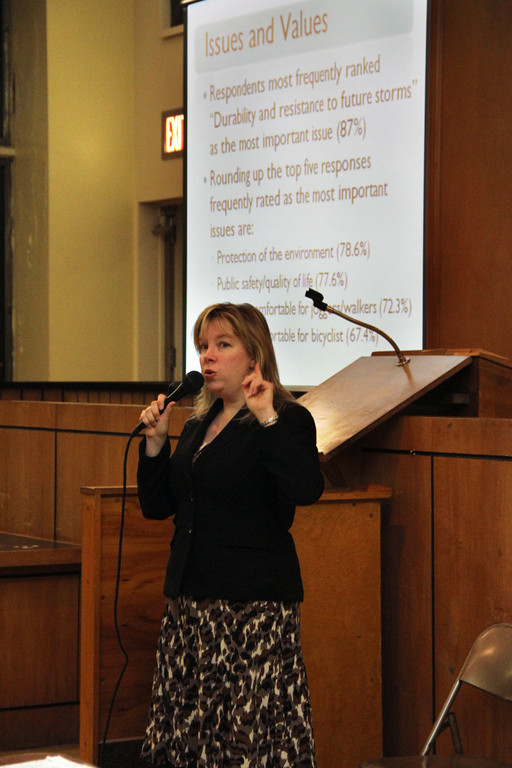Durability is top concern for Long Beach boardwalk project
Survey, focus group findings presented at final meeting
The city held the last of a series of meetings last week in which it solicited residents’ ideas and concerns about rebuilding the boardwalk.
“This has been the most comprehensive effort to obtain public input in Long Beach’s history,” said City Manager Jack Schnirman.
Two weeks after the city hired an engineering firm to begin the process of reconstructing the storm-battered walkway, city officials and Sustainable Long Island, a nonprofit organization that promotes economic development, environmental health and social equity, launched the series of focus-group meetings, which began on Feb. 6. Additionally, the City Council posted an online survey “to identify what values are important to residents and business owners …”
The purpose of the final meeting, on Feb. 20 at City Hall, was to present the findings of the survey and three focus-group sessions, at which residents were asked what they liked about the old boardwalk and what they wanted to see in a new one.
Amy Engel, executive director of Sustainable Long Island, said she was impressed with the participation in both the survey and the focus groups. More than 2,350 people completed the survey, and more than 250 took part in the focus groups — one session each for the East End, West End, Central District and Chamber of Commerce.
“We were really happy to see residents actively voice their concerns and their hopes,” Engel said. “We found it to be very helpful, informative and a really good example of the commitment that everybody has to this reconstruction.”
As it turned out, residents are most concerned about making the boardwalk resistant to future storms; environmentally undisruptive and sustainable; low-maintenance and safe; and comfortable for walkers, joggers and bicyclists. Schnirman said that the LiRo Group, the engineering firm the city hired to lead the project, would take the opinions and suggestions into account as it draws up plans and finalizes the design.
“It’s so important that the survey results and the focus group results will provide the necessary foundation for us in determining how we go forward, how we define stronger, smarter and safer,” Schnirman said.
Eighty-seven percent of those who completed the online survey ranked “durability and resistance to future storms” as the most important factor in boardwalk reconstruction. That was also the most popular choice of those who attended the final meeting.
Survey takers were also asked what materials they would prefer that the new boardwalk be built with. Given the options of wood, cement, a combination of the two, recycled hard plastic or “other,” 34 percent voted for a wood/cement combination, the most popular choice. More than 300 people added comments, mentioning things like rusty nails and broken planks, which plagued the old boardwalk.
Focus group participants discussed what they envisioned for the new boardwalk, and what changes they would like to see. Many described the walkway as the “heartbeat” and “focal point” of Long Beach, and said they were most concerned about “storm sustainability” and safety in the future. Some suggested a wider boardwalk, with more concession stands and improved amenities — better restrooms, showers and bike lanes.
Schnirman explained that the city is now at step 5 of a 10-step process for the first phase of boardwalk reconstruction. Demolition is complete, he said, and sand sifting, or removing debris from the beach’s sand, is in its final phase. The LiRo Group is now involved, and has begun its work. Step 5 began with the gathering of public input, and will be complete when design specifications are finalized.
“The data that this process has gathered and captured will go directly to the experts, and [guide] them as they generate construction options and recommendations,” Schnirman said.
Step 6 involves asking the Federal Emergency Management Agency to approve design plans, and requesting federal mitigation funding. Schnirman stressed that the boardwalk rebuild would not continue without FEMA’s stamp of approval.
“FEMA plays a very important role,” he said. “Without the mitigation money, we’ll be forced to build the boardwalk exactly the same.”

 44.0°,
Mostly Cloudy
44.0°,
Mostly Cloudy 









